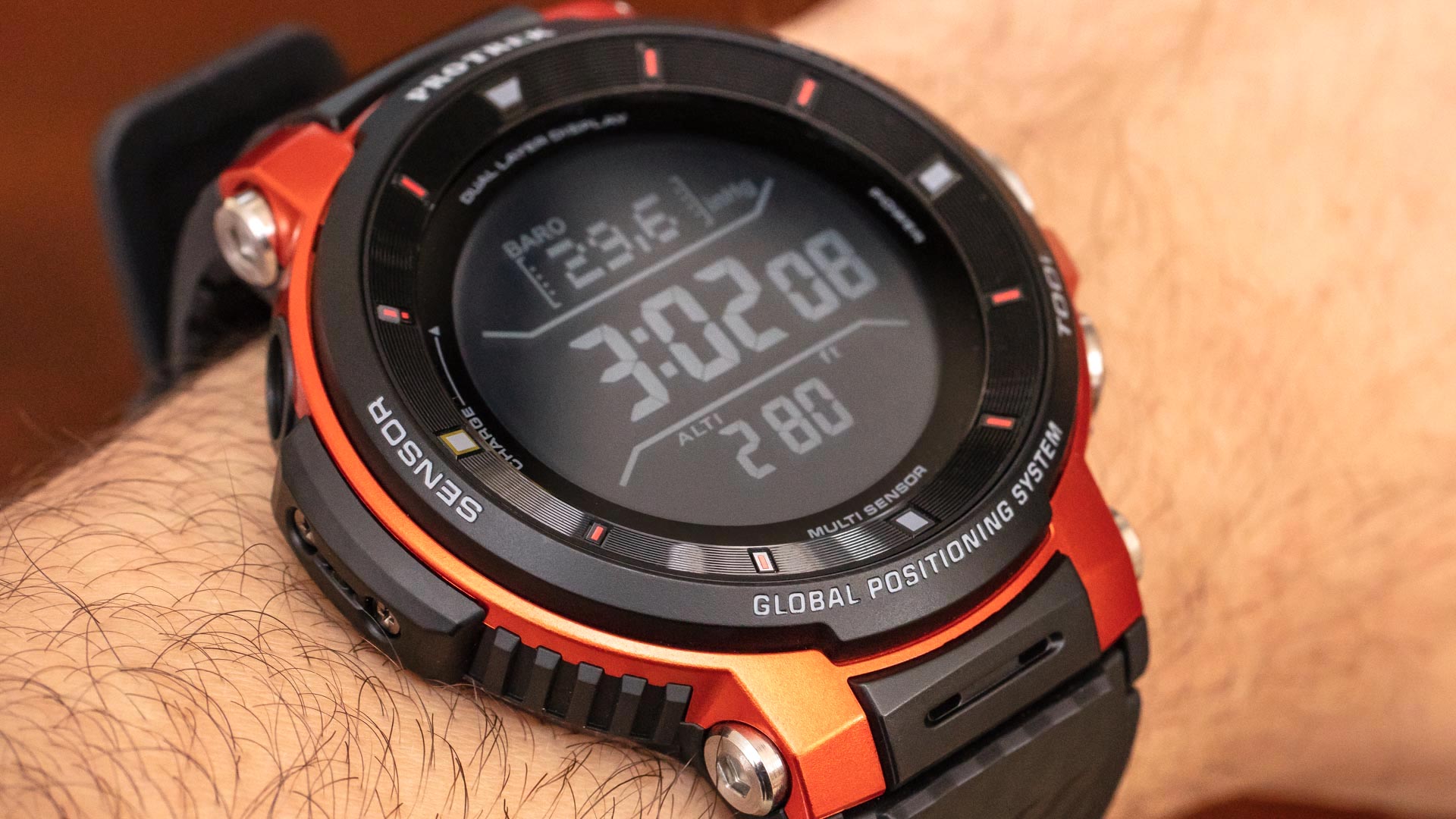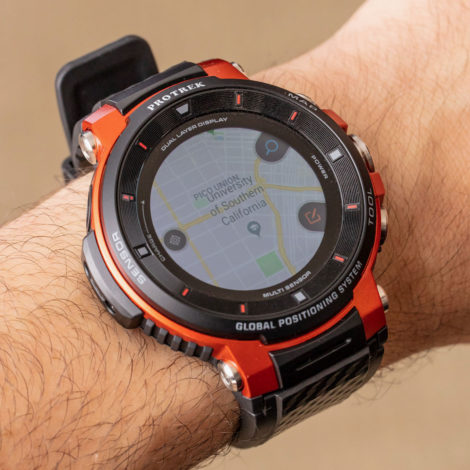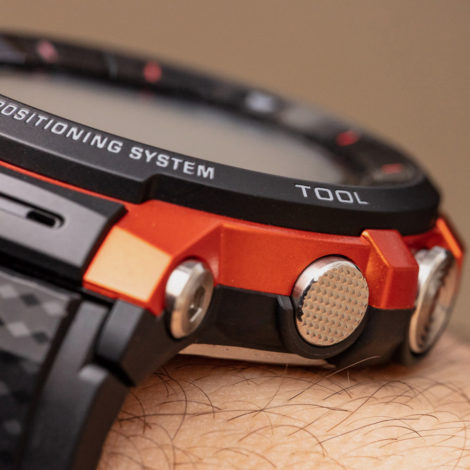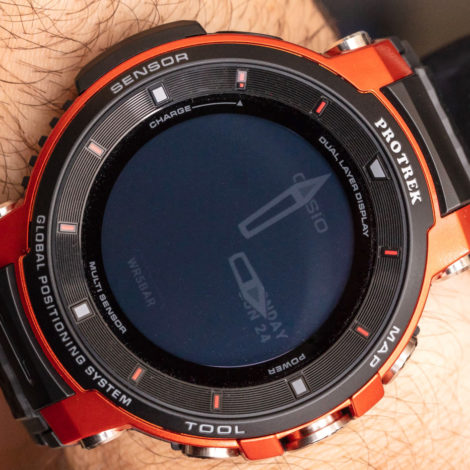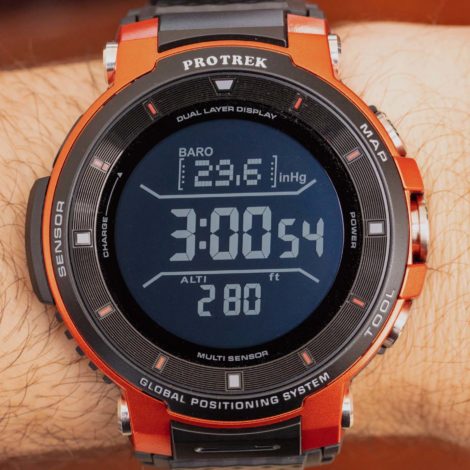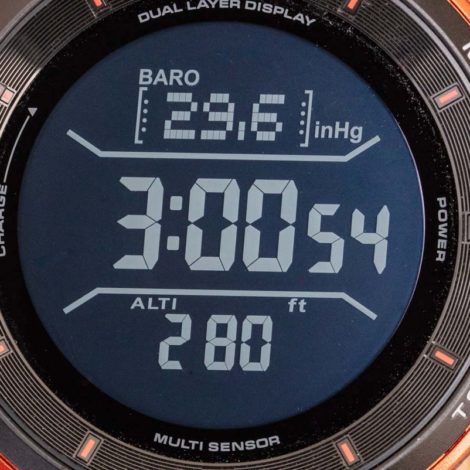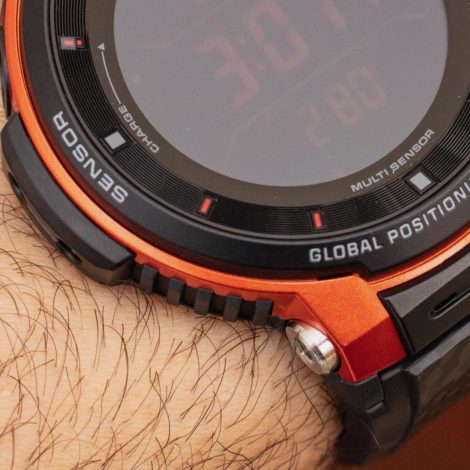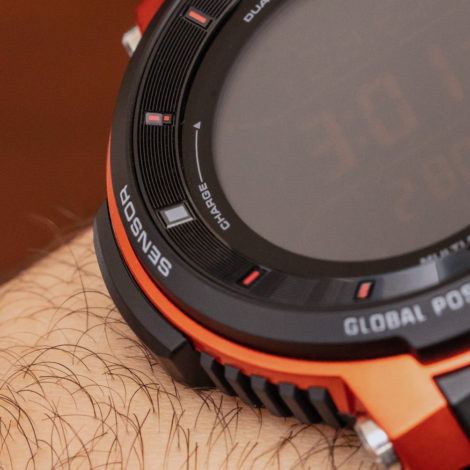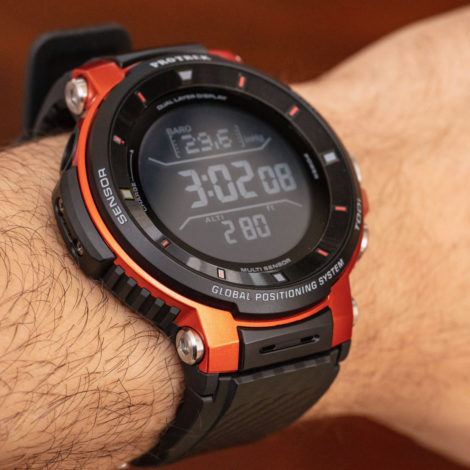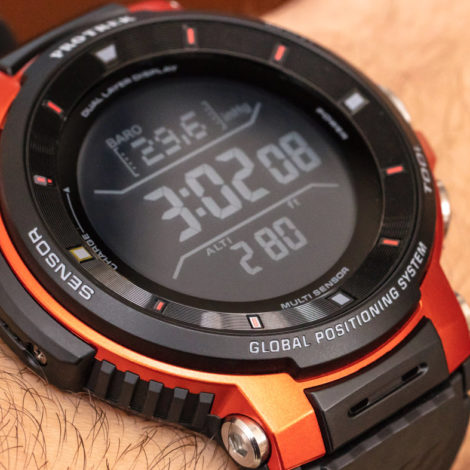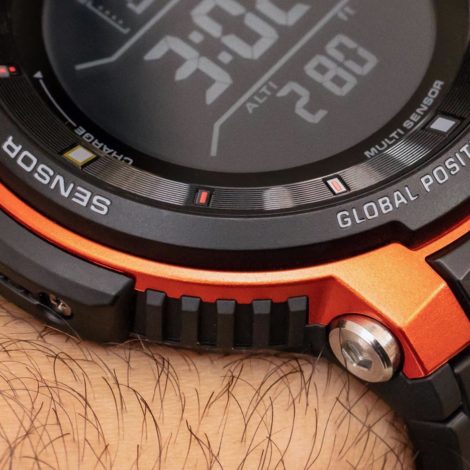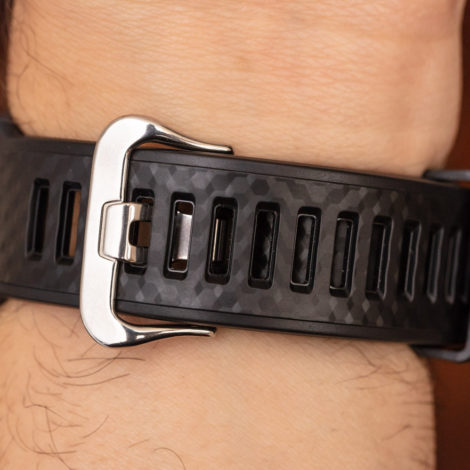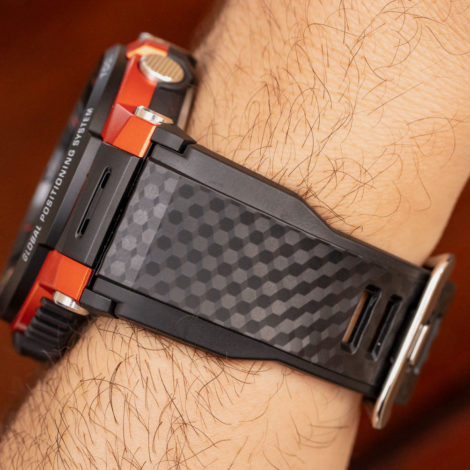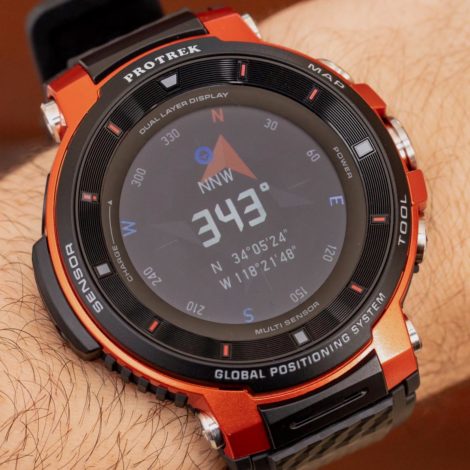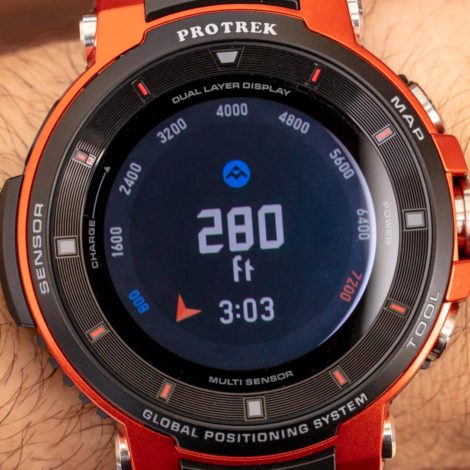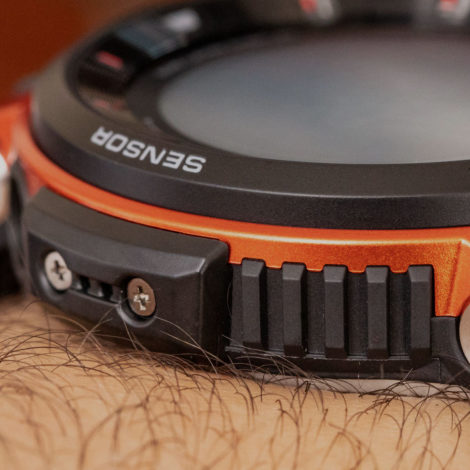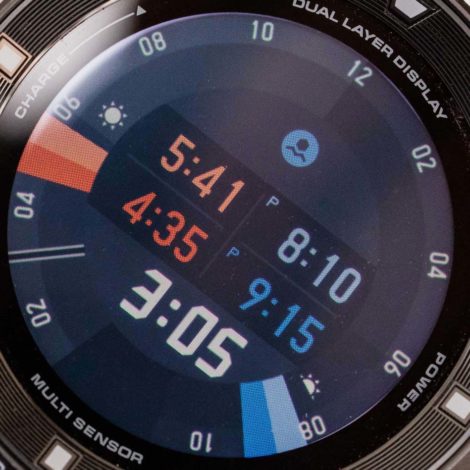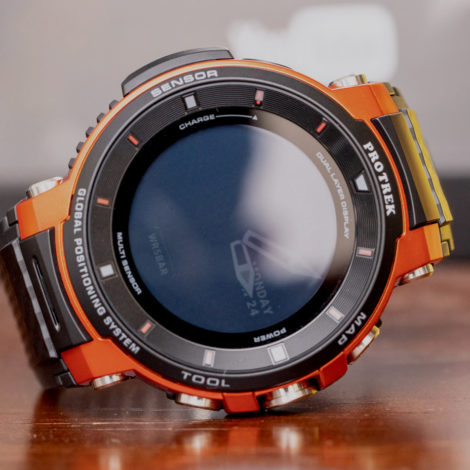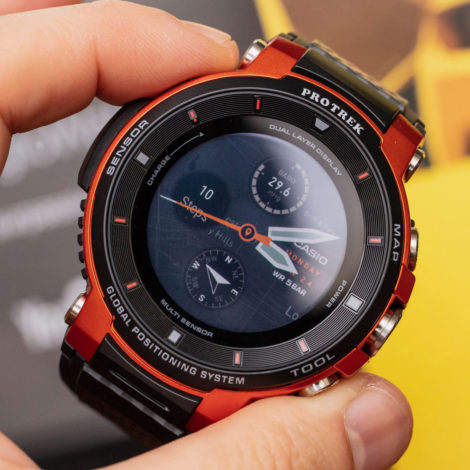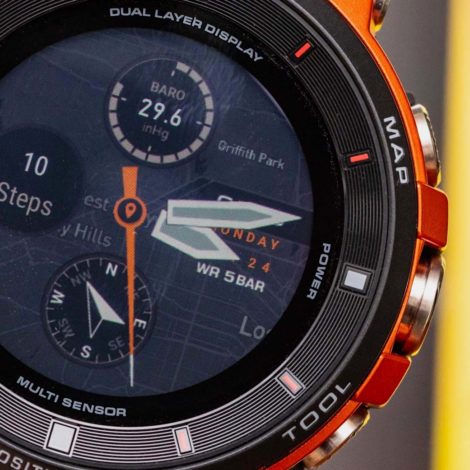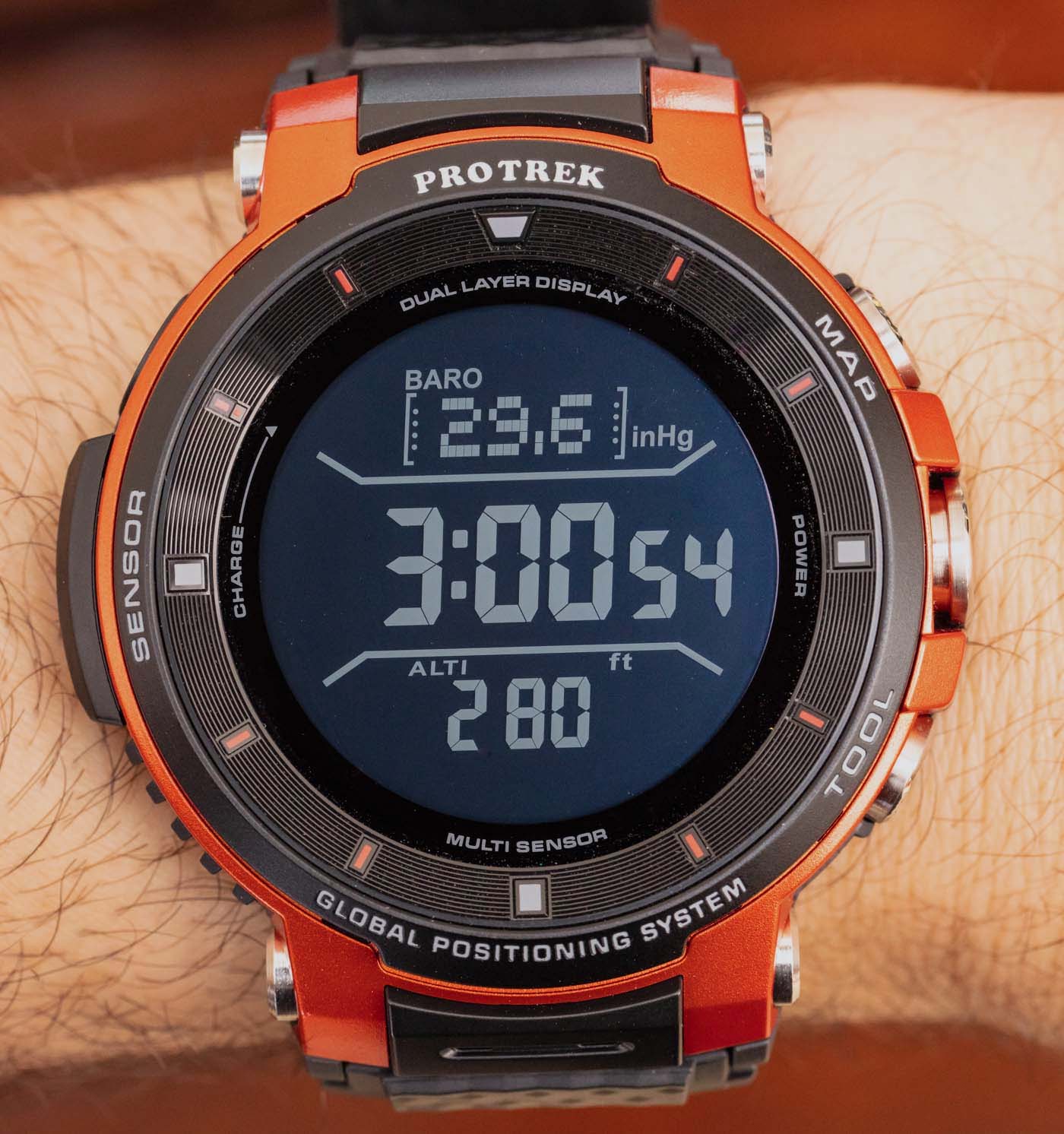
The newest smartwatch by Japanese watchmaker Casio for 2019 is the WSD-F30 in the Pro Trek Smart collection. This watch review will discuss how Casio has updated its lone smartwatch collection product, as well as where Casio appears to be headed in its still-new connected smartwatch journey, given that most of the watches Casio continues to produce are classified as traditional watches (though many of them have connectivity features). Casio started making modern connected smartwatches with the WSD-F10, which was followed a year later by the WSD-F20. The WSD-F30 is a third-generation product for Casio’s only Android Wear-powered smartwatch device.
The Hiking & Adventuring Android Wear Smartwatch
With the WSD-F20, Casio formally included this product into the hiking and outdoor adventure-theme Pro Trek family by calling it Pro Trek smart. This designation is important for consumers because it helps frame the particular smartwatch niche that Casio is going for. I’m not familiar with each and every smartwatch currently available, but from what I can tell, Casio’s niche with the WSD-F30 is a durable, longevity-focused outdoors watch that runs the Google Android Wear operating system. Competitors from companies such as Samsung, Apple, Garmin, and Suunto have their own capable products but none that inhabit this particular niche.
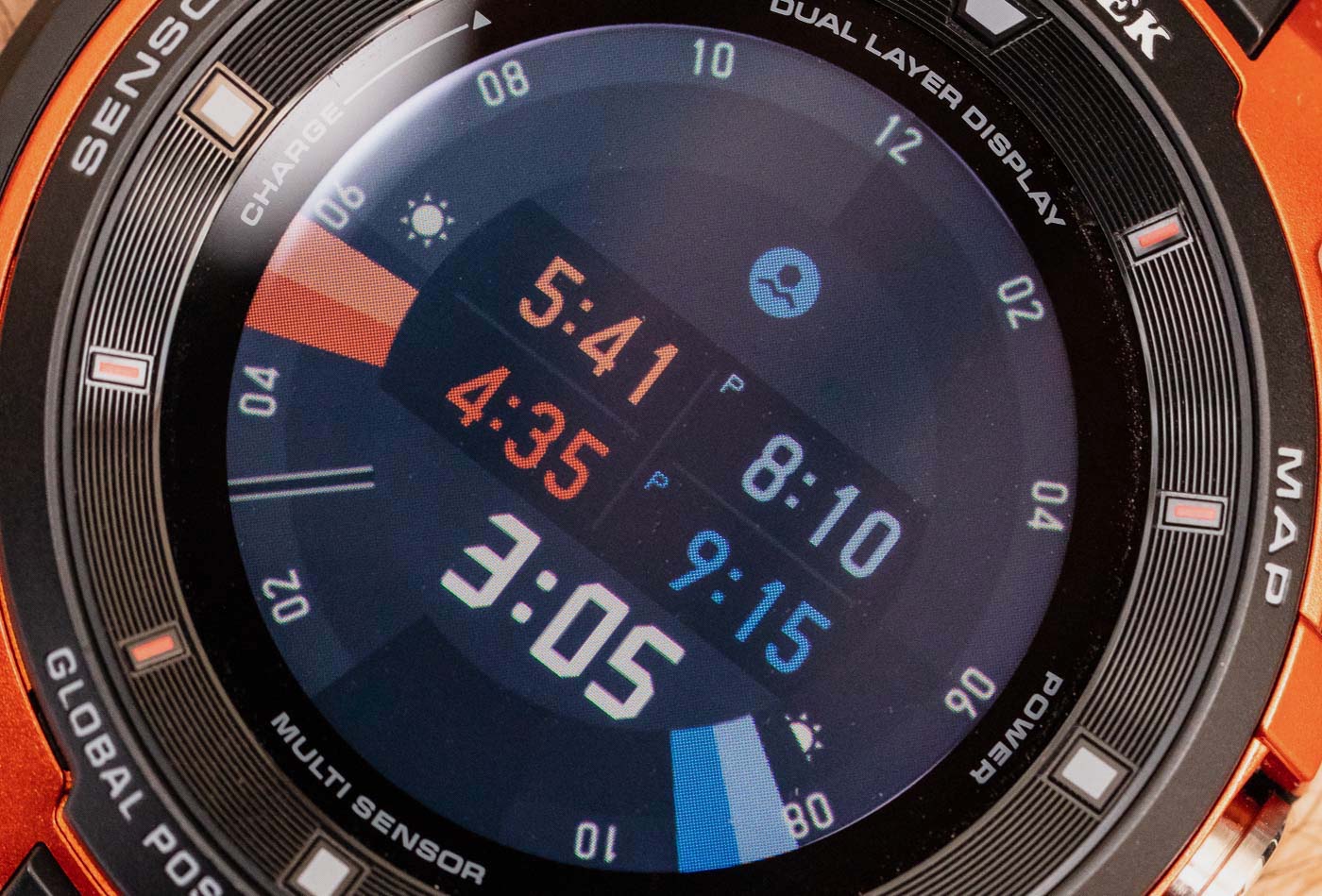
Casio has years of experience with the larger Pro Trek collection of hiking watches (once called the Pathfinder in the US), and with a smartwatch, the world of features and possibilities in an adventure watch really blossoms. While wearing the WSD-F30, I actually try my best to ignore the stock Android Wear features (save for Google Fit and Google Maps, perhaps) in order to focus on the software that Casio has developed for its Pro Trek Smart smartwatch collection, including the WSD-F30. The major benefits of a smartwatch platform are GPS sensors and sophisticated software that can use that information. The WSD-F30 also can natively store maps, which gives you the ability to perform a series of map, waypoint, and navigation tasks right on the watch without needing to rely on an Internet connection.
In fact, Casio seems to have designed the WSD-F30 with the notion that its wearers would regularly be out of traditional cell phone reception zones. (Being able to natively store map data is one example of how.) The watch also includes a host of power-saving features to help extend the smartwatches one to two days of battery life to about a month, if necessary. The way this is accomplished in the WSD-F30 is interesting because, for this product, Casio introduced its dual-screen technology. This isn’t new for Casio, per se, but it is new for the brand’s smartwatches. The idea is that there is a bottom, backlit, full-color OLED screen topped with a transparent monochromatic screen.
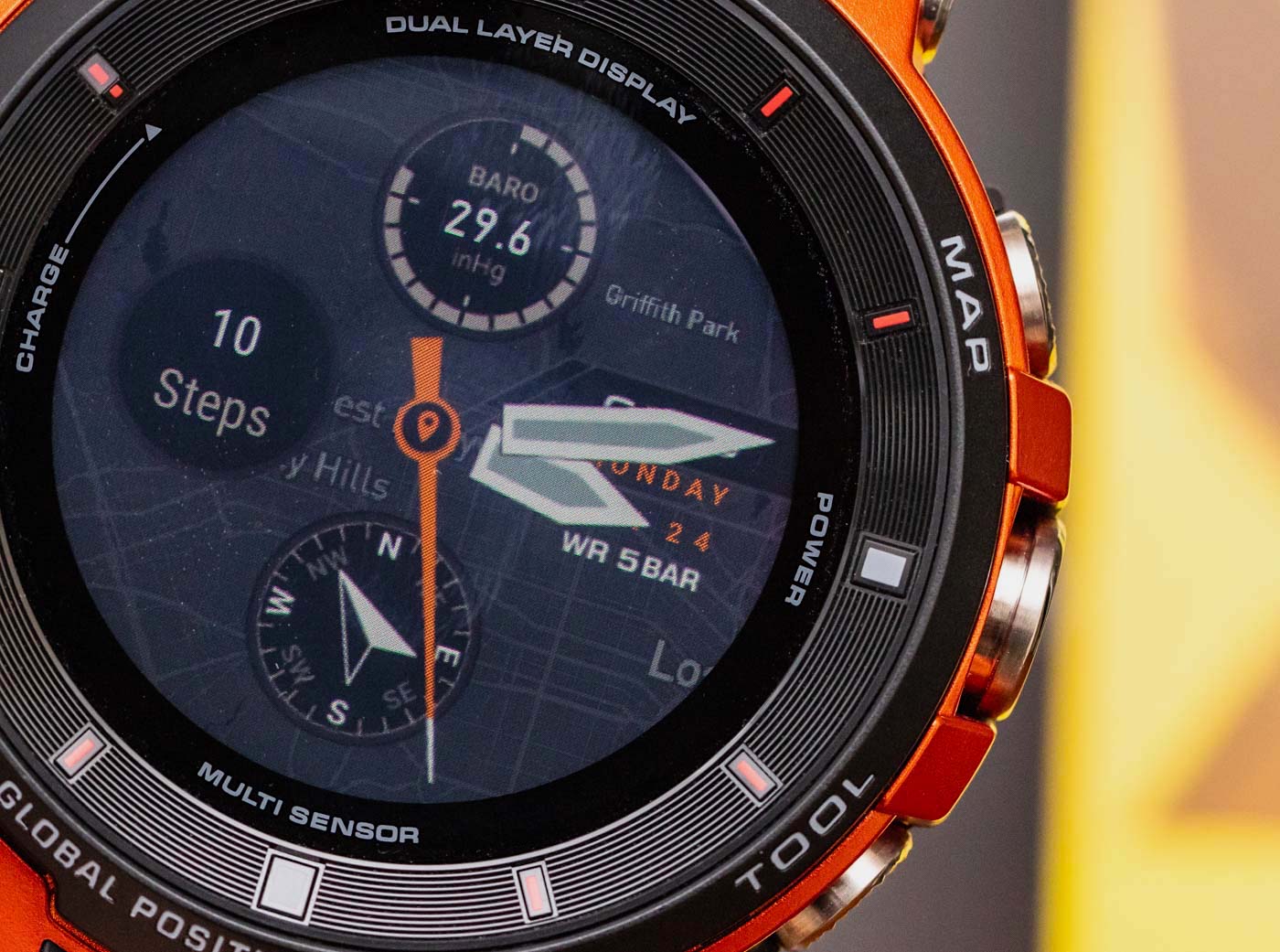
The watch features an attractive and useful always-on display that only uses the top screen. This allows the watch to save power by giving you the time at a glance but not necessarily requiring the main display to power up and drain the battery. The WSD-F30’s wearer can use various power-saving options to selectively turn on and off some functionality in order to extend the WSD-F30’s battery life or turn everything on for it to continuously monitor GPS data, as well as function as a fully connected smartwatch device ready with notifications and alerts.
I found the dual-screen system to be a brilliant concept, but I don’t feel like Casio’s user interface design made the best use out of it. It feels as though Casio introduced the dual-screen technology for some purposes, such as to save battery live, but they still haven’t taken full advantage of how the two screens can work together when it comes to various displays.
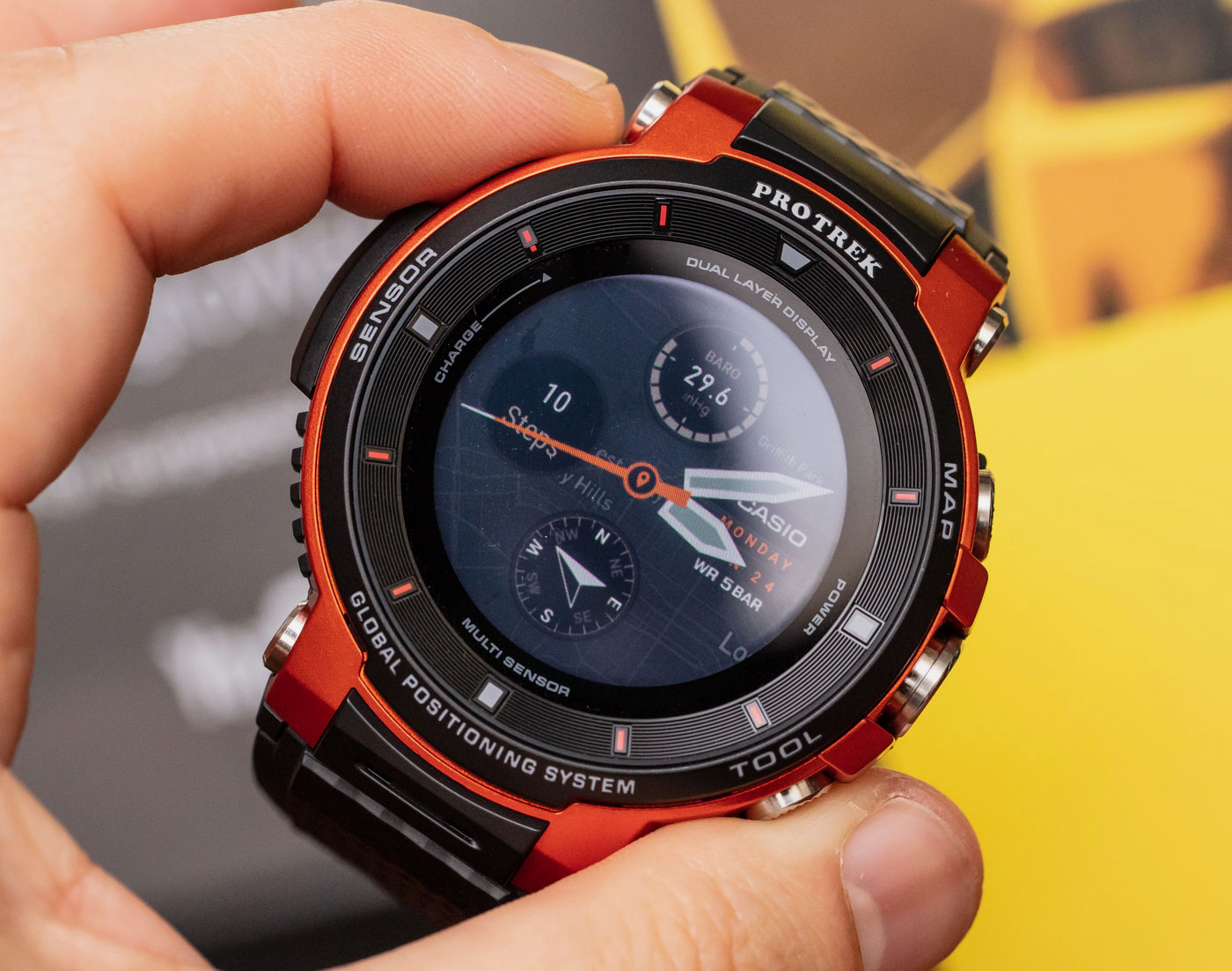
A New More Wearable & Refined Case Design
Casio claims that the Pro Trek Smart WSD-F30 complies with US Military Spec MIL-STD-810G for environmental durability, and the case is water resistant to 50 meters — meaning you can easily go swimming with it. The case has a series of openings for sensors (such as the onboard barometer), so the durability rating is still impressive. The watch doesn’t have a heart-rate monitor, though I think Casio will want to include this in the future. The brand has other products it designates as being more for exercise and fitness. Remember that the Pro Trek Smart is an adventure and navigation watch, not intended as a fitness device. That doesn’t mean you can’t use the WSD-F30 to train, but rather that Casio has not yet approached the need to include a heart rate monitor as part of its onboard kit of tools.
The 390×390 pixels OLED touch-screen display is bright and crisp, and over the screen is a mineral crystal (not sapphire at this price point, unfortunately); I certainly don’t miss the days of incomplete circle screens for Android Wear devices. I found the screen to be generally very responsive, despite the fact that pinching and pulling on a 1.2-inch screen requires some delicate finger gymnastics from time to time. Casio does include three pushers on the case, though having to interact with the touchscreen is a core part of the Android Wear operating system.
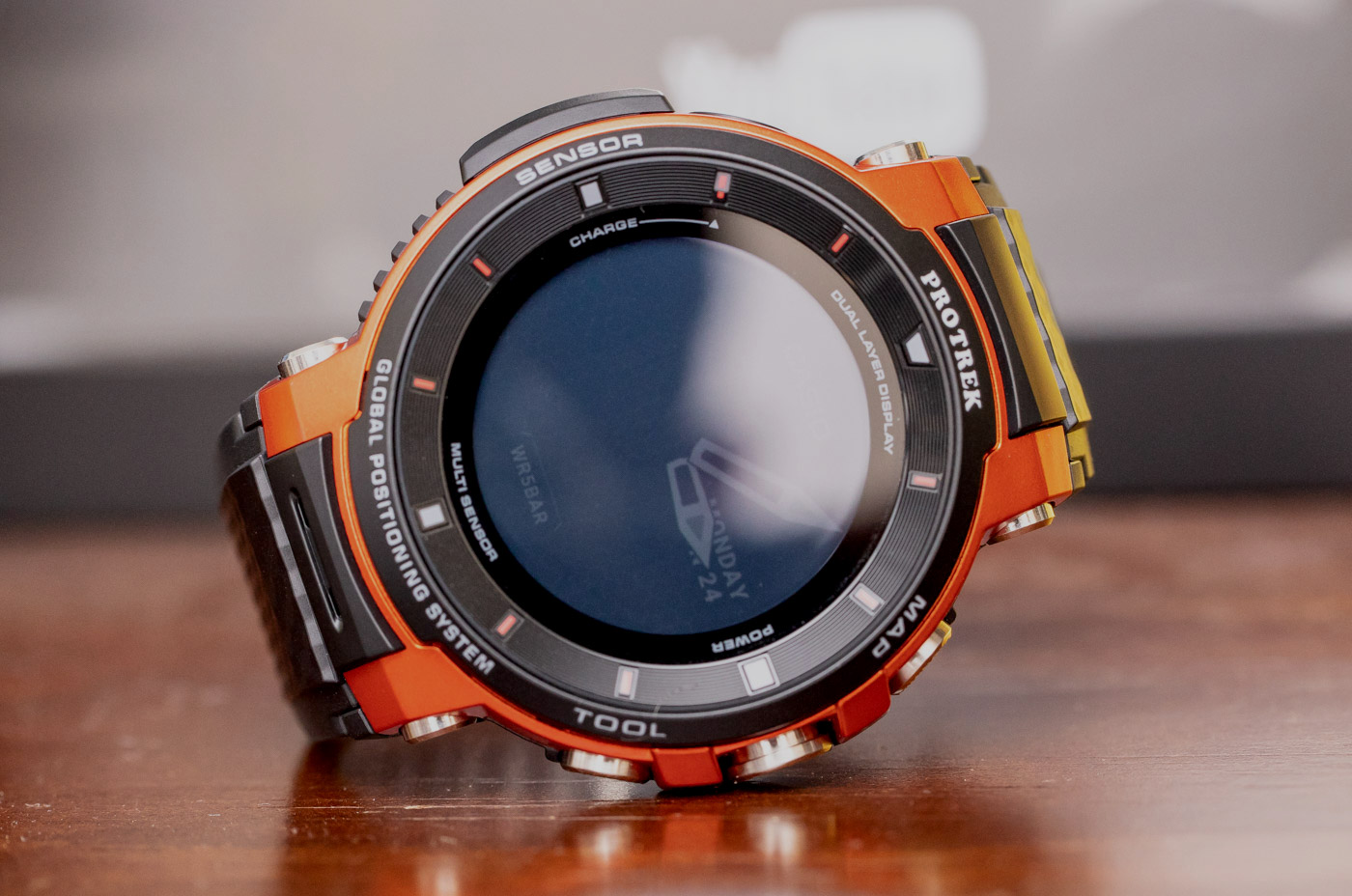
For the WSD-F30, Casio introduces a totally new Casio design for its smartwatch. It is still big, but it is far more attractive and visually interesting, as compared to the WSD-F10/20 products. The case is 53.8mm-wide, 14.9mm-thick, and 60.5mm lug-to-lug. That’s big, but at just 83 grams, it wears very comfortably. Casio also continues to improve the straps on its smartwatches, which now feature quick-release spring bars. The stock polyurethane straps are pretty nice looking, but it is nice to know that they can be replaced with something else easily enough.
Charging the WSD-F30 is still done via a magnetic charging cable that attaches at about 10 o’clock on the case. The magnetic connection is solid, but I still feel that there should be a slightly more secure way of connecting the charging cable should the watch be in a backpack or you are otherwise on the go while charging. Casio actually sells a “Powertraveller” kit that includes a solar USB charger that would work nicely with the WSD-F30, assuming you can sit and wait for it to charge for a few hours.
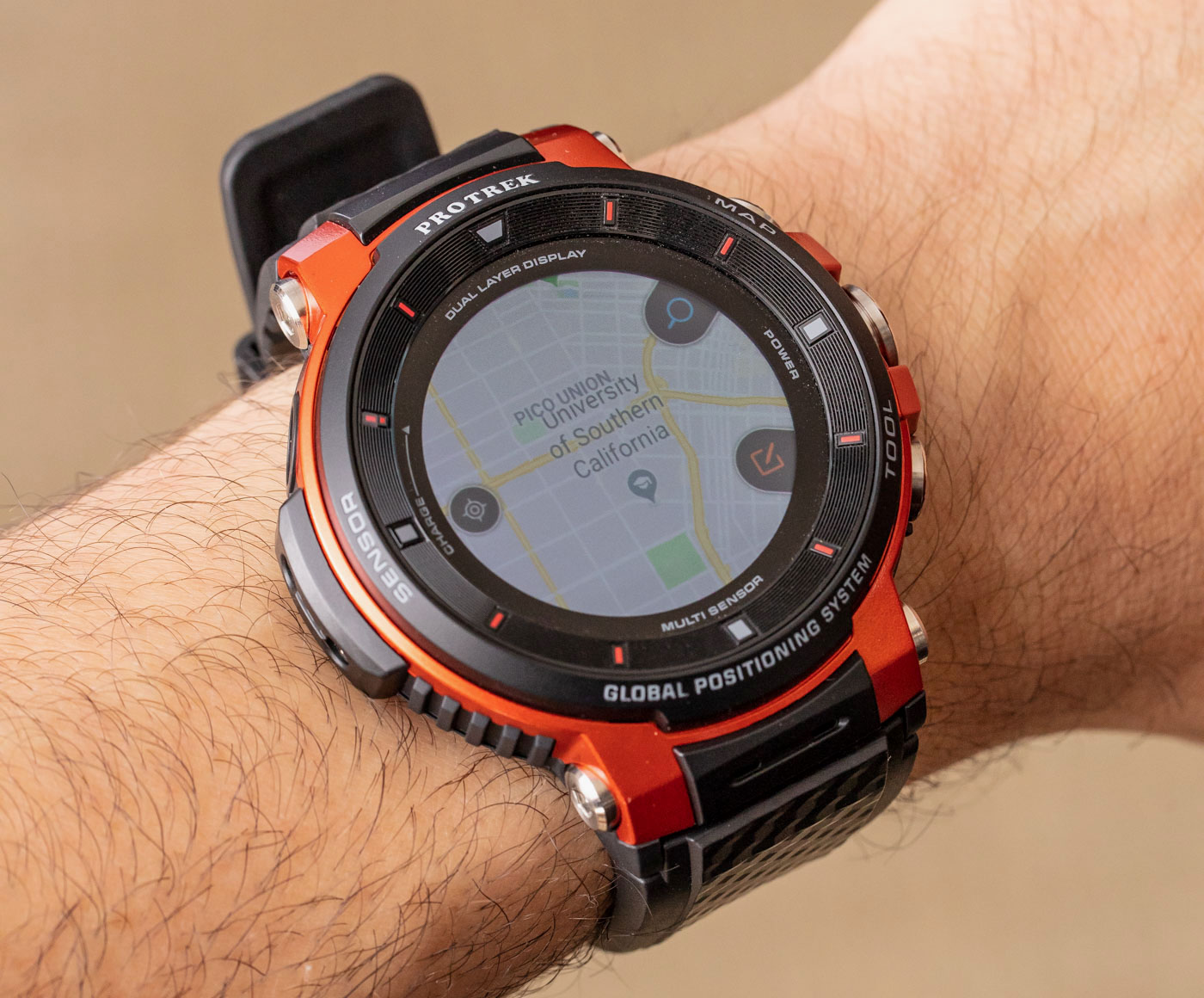
Software Design & Utility
Casio, like many other Japanese companies, prefers to be vertically integrated as much as possible. That means they not only want to produce and design their watches but also produce and design the guts inside those watches. With the Pro Trek Smart, the WSD-F30 is running Google’s Android Wear software, for which Casio has written some special software. Casio cannot entirely control Google Android Wear, and my suspicion is that their engineers feel limited by that. For that reason, I believe Casio has included a “standard smartwatch” (the Pro Trek Smart, that is) as just one of its modern connected timepiece products. My point is that, while Casio seems to be a firm believer in the future of smartwatches, it is only putting some of its resources into ones that run Android Wear.
That is OK because Android Wear has a lot to teach Casio about how watches can better interact with a connected world than a traditional watch. Casio, for example, has other watches that use Bluetooth, but that is more or less only used for basic communication protocol between a watch and a user’s phone through a dedicated app. With Android Wear, Casio is forced to keep asking itself how it can best use the features in the operating system to further its mission of producing a world-class hiking and outdoor watch.
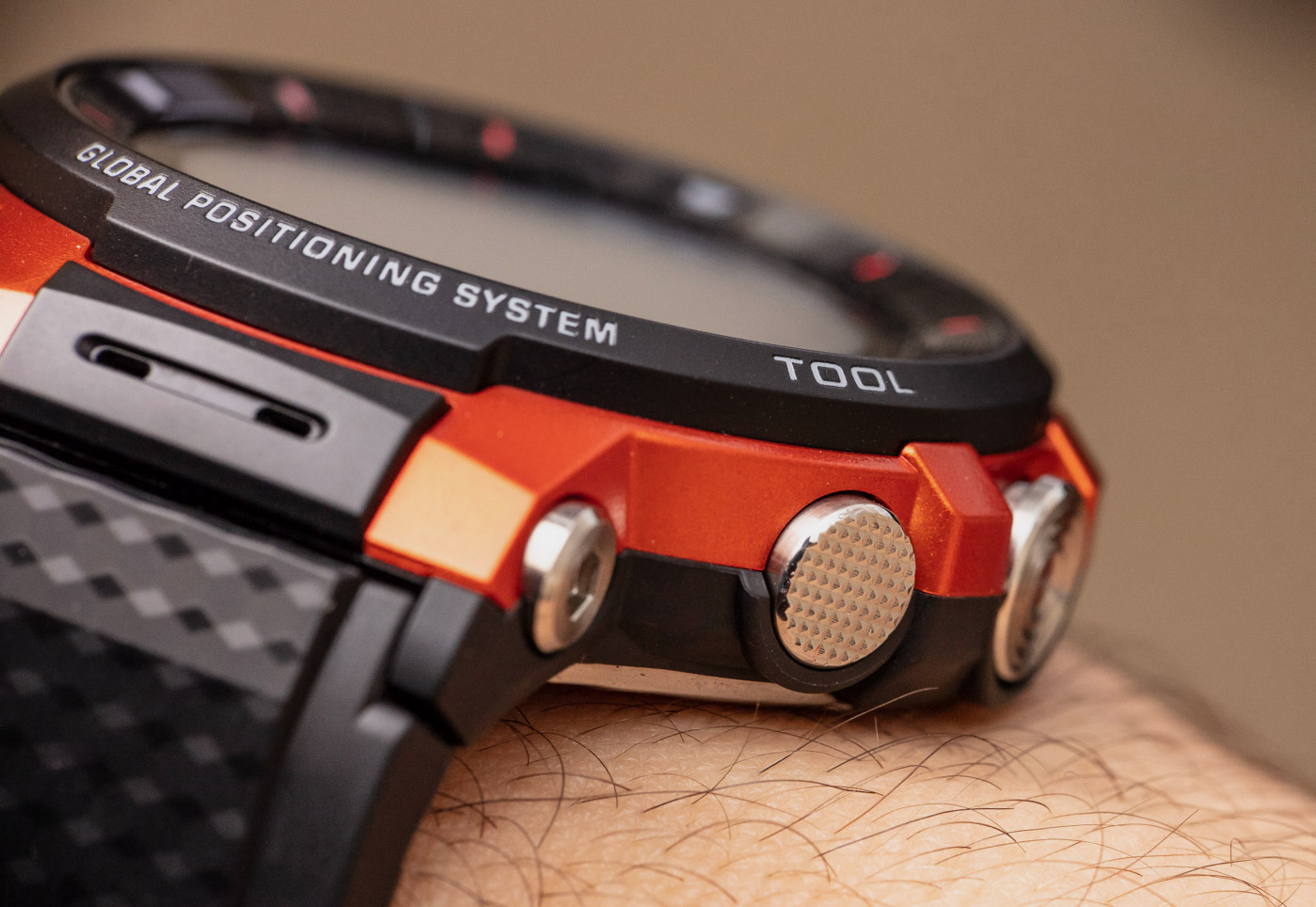
One of the first pieces of software users discover on the WSD-F30, written by Casio for the platform, is “Tool.” There is a dedicated pusher on the case to activate this multi-screen software, which does things like display an on-screen compass, barometer, and altimeter. Tool is Casio’s way of incorporating traditional Pro Trek “triple-sensor” features into the watch — and I think it continues to be done very well in the WSD-F30. That said, I would have liked to see more updates — at least visual refinements over the last generation WSD-F20 watch.
In fact, the WSD-F30 doesn’t introduce any new Pro Trek Smart software (that I’ve noticed). Casio Moment Setter + is still the core utility app, which is all about using the GPS and mapping functionalities for a series of purposes. These tools are among the more interesting you’ll find in the WSD-F30, but they are really intended for those seriously trekking or needing their GPS device as a survival or performance device.
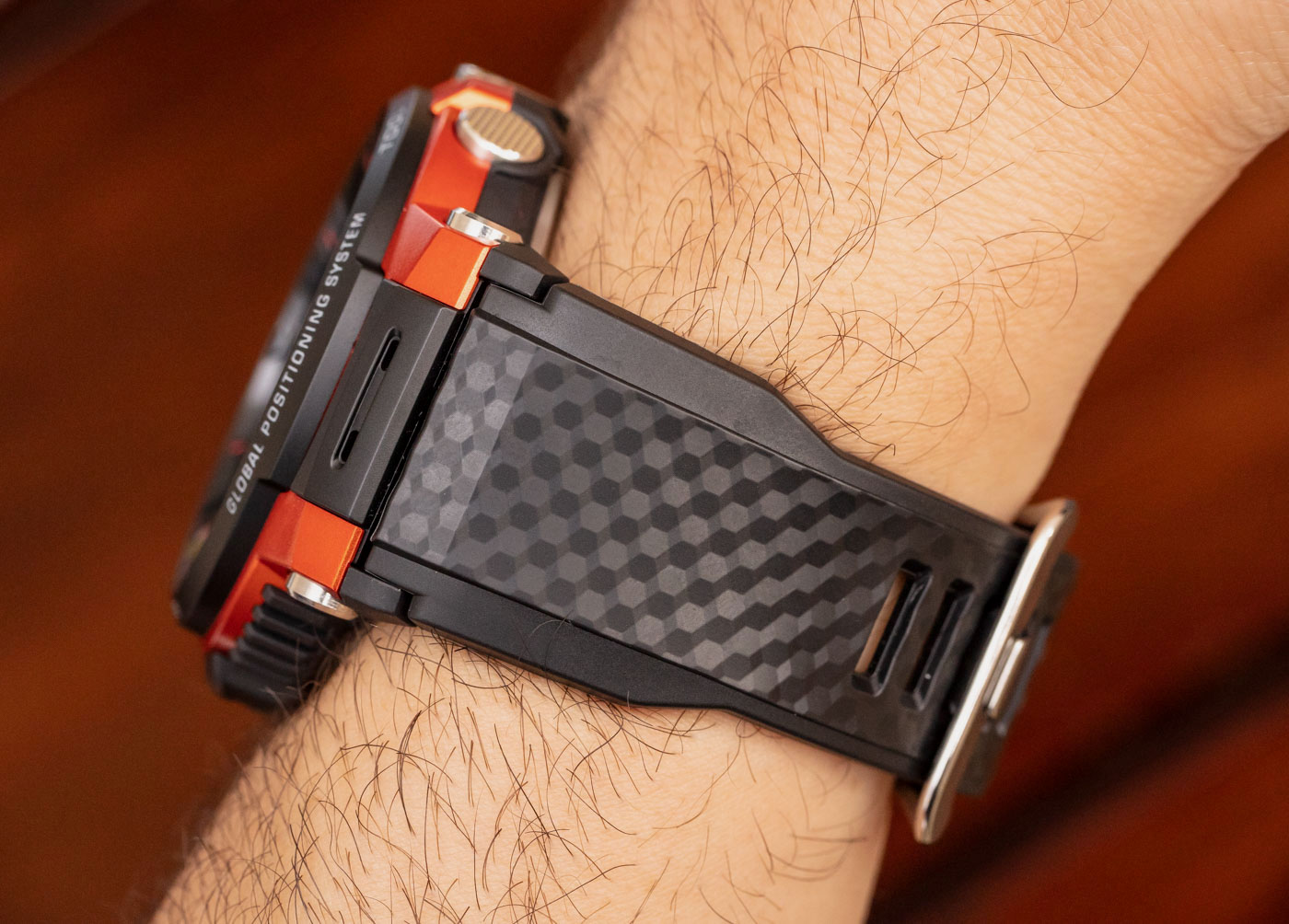
But I do want to compliment Casio on its ability to curate the software and features of the watch for the audience they are hoping to attract with the WSD-F30. In addition to the dedicated pushers on the case for the Tool and Map features, the preloaded software in the watch (there are a total of 4 gigs of internal memory) is full of tools for specific sports and outdoor activities. With a little bit of searching, the user of a WSD-F30 smartwatch can easily locate tools that can help make some of their favorite activities more interesting (or at least more data intensive).
It is a running cliché in the tech industry for companies to claim that “this year’s model is the best we’ve ever made.” The technology industry normally employs an iterative approach to design in which new products build on the strengths of previous ones. So, it’s no surprise that the WSD-F30 is the best smartwatch Casio has ever made. Does that mean they are done? Hardly. Casio seems to be taking its time with standard smartwatches by having a single product line (the WSD-FXX) in a single activity category (outdoors/hiking). Casio could easily have a family of Android Wear smartwatches for other activities ranging from fishing to flying, but they don’t. Rather, they are seeing where the smartwatch industry is going while, at the same time, participating in it. What flaws the WSD-F30 has are mostly related to the limitations their own hardware makers have when it comes to accessing the core Android Wear software system. The platform is designed to have hardware house it, as opposed to hardware that really integrates with it. Casio is accustomed to a more integrated approach to how software and hardware work together, which makes their smartwatches a particular challenge for the team.
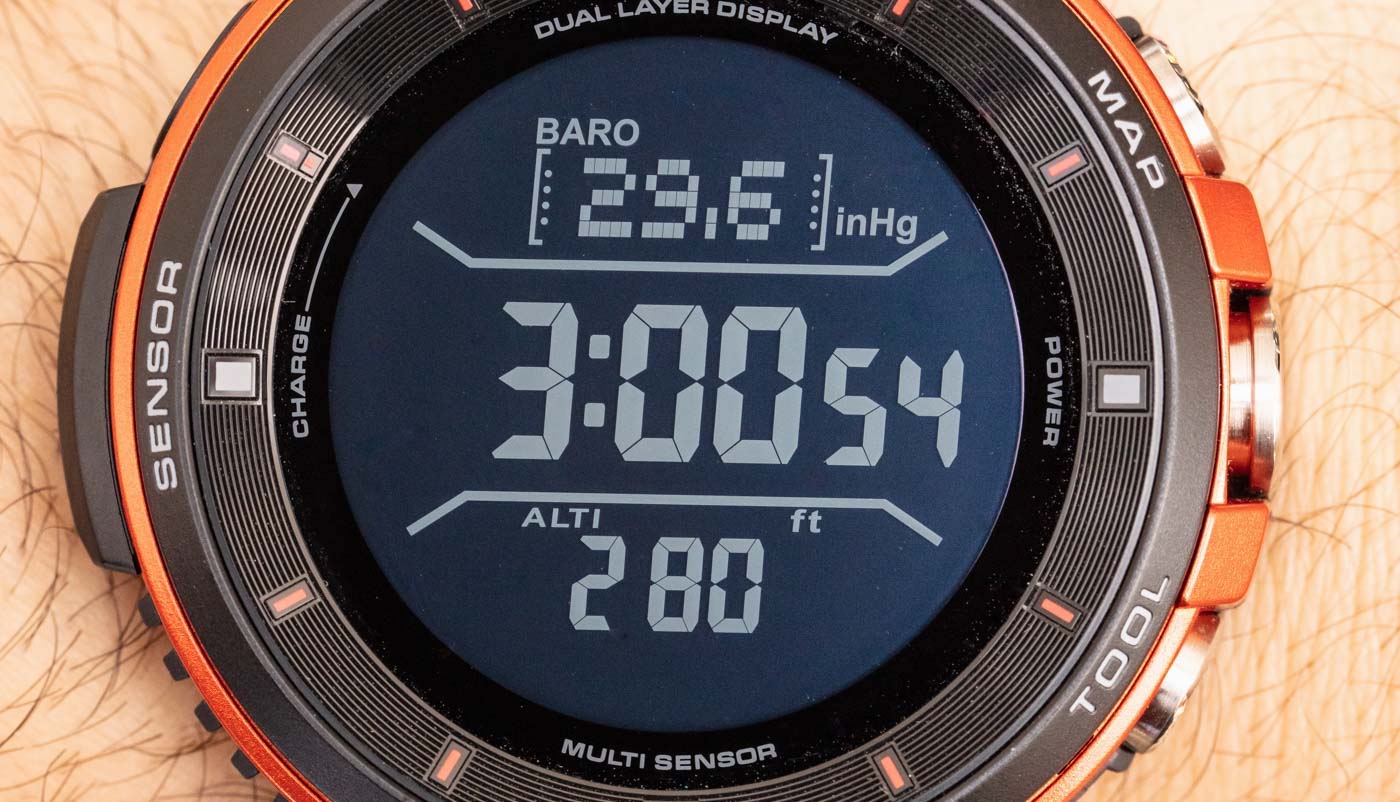
I’d like to see Casio continue to develop software both for utility and aesthetics. Casio more or less defined what a plastic digital sport watch should look like with the G-Shock. Now the brand can innovate more and show the world what digital smartwatch screens should look like. There are hints of design genius in the software Casio made for the WSD-F30, but I don’t think we’ve seen the full potential of what a company like Casio can do if it really invests in smartwatch screen interfaces. Assuming those faces get good enough, they could offer all Casio Pro Trek Smart product wearers free downloads, and perhaps the company could earn some profits by selling digital watch faces for other compatible Android Wear-based smartwatch devices.
Price-wise, the Casio Pro Trek Smart WSD-F30 seems to be in the middle between premium-segment “lifestyle” smartwatches and entry-level fitness-themed smartwatches and wearables. The plastic and metal case construction, along with spirited original design, make the WSD-F30 exist between these two worlds. The watch entirely lacks the pretension of a luxury product but doesn’t feel like a toy either. It is probably the Android Wear smartwatch I’d get right now if I were in the market for one. Casio debuted the WSD-F30 in blue as the WSD-F30-BU and in orange (as tested) as the WSD-F30-RG. Retail Price is $549.99 USD. Learn more at the Casio website here.
Necessary Data
>Brand: Casio
>Model: Pro Trek Smart WSD-F30 (WSD-F30-RG as tested)
>Price: $549.99 USD
>Size: 53.8mm-wide, 14.9mm-thick, and 60.5mm lug-to-lug distance.
>When reviewer would personally wear it: Hiking or delving into unfamiliar wilderness come to mind as excellent times to wear this smartwatch.
>Friend we’d recommend it to first: Data-junky who likes to hike and will use the native maps in order to track their adventure where cell phone signals won’t go.
>Best characteristic of watch: Comfortable and lightweight with a bright, responsive screen, the WSD-F30 is a snappy smartwatch with excellent software by Casio on top of Android Wear, specifically made for the watch’s intended outdoor-activity uses.
>Worst characteristic of watch: Casio seemed to put most of its effort in the WSD-F30 into the new case and dual-layer screen technology. The latter isn’t used as well as it might be, and the overall package seems to need more updates and expansions in the area of software and visual interface design.

